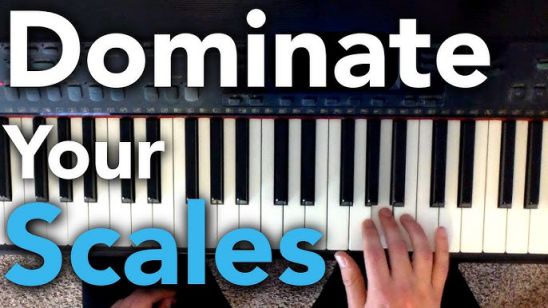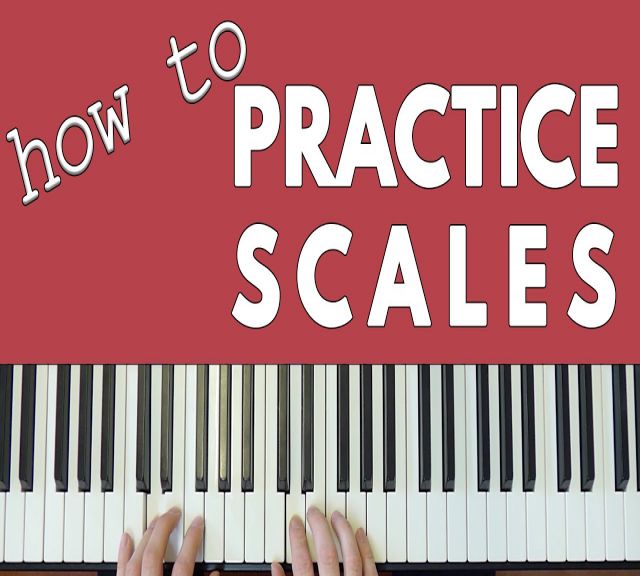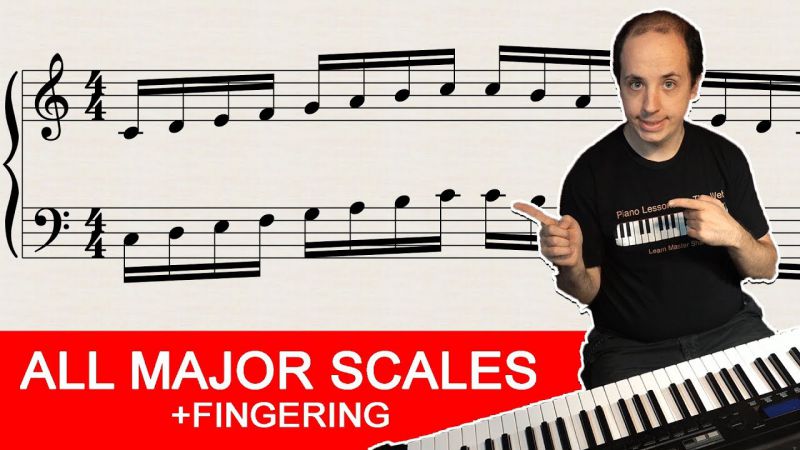You cannot play piano music with confidence if you don’t know the piano scales. Learning piano scales is important if you want to play piano music full of confidence.
You may inquire, “What precisely is a scale and for what reason is it critical to learn?” A scale is a bunch of melodic notes requested by pitch or recurrence. Increases make the foundation of most melodic pieces, with a solitary scale giving the song congruity.
Scales regularly length an octave, which is eight keys, say, for instance, from C-D-E-F-G-A-B-C. That is an octave. (There are different sorts of scales, which we will not get into now for the good of effortlessness).
The piano scales include twelve major and thirty-six minor scales. These minor scales include harmonic, melodic, and natural minor scales.
The major scales are the scales suggested to students to learn in order to start their piano learning journey. The major scales are the understanding of major keys you need to learn at the very first stage of your piano journey.
Jump To Heading
How To Learn Piano Scales Of Every Type?
Learning piano scales is not a hard job it’s quite easy if you do it precisely with full of dedication and practice.
But you should know which piano scales are important to learn first. There are plenty of scales to learn on the piano. But you should start with major scales and proceed further. This is because the major scales are the most common scales and are easy to learn for beginners.
Types of Piano Scales:
Before getting started with learning piano scales you must know about different kinds of piano scales for better comprehension. There are certain piano scales to learn but in this article, we will try to discover and learn two main scales major and minor piano scales.
Major Scales
You need to get aligned with semitones and tones to make major scales. In optimistic and upbeat music you need to use major piano scales that’s why you must learn these scales.
The major scales play the role of the first step for beginners and piano learners. When you start learning piano you are asked to learn major scales first to get used to them. Afterward, you discover other scales to polish your piano skills.
The pattern for learning major scales is as follows.
Root-Complete Step-Complete Step-Half Step-Complete-Step Complete Step-Compete Step-Half Step.
Minor scales
If you want to learn minor scales you must know that there are three subdivisions of minor scales natural, harmonic, and melodic. If you want to become an expert on minor scales you need to learn all of these three scales. First, let’s learn the minor scales.
As mentioned earlier that major scales are optimistic and upbeat music notes on the other hand minor notes are quite sad, mysterious, and exotic notes.
When you have to express complex emotions or feeling you have to play minor scales. You just need to check how the scale degrees vary from major to minor scales.
The natural scale
Tonic – Tone – Semitone – Tone – Tone – Semitone – Tone – Tone
This is the pattern for the natural piano scale known as the first minor scale. This scale is the first minor scale that resembles the C-Major scale.
The Harmonic Minor scale
When you learn the harmonic note you need to focus on the raised 7th note which doesn’t appear in the normal key signature. The raised 7th note indicates the existence of three semitones between the sixth and seventh notes. The harmonic minor scale is the key feature of western music. Without the harmonic minor scale, western music is incomplete.
The pattern to create the harmonic minor scale is as follows.
Tonic – Tone – Semitone -Tone – Tone – Semitone – 3 semitones – Semitone
The Melodic Minor scale
To make a “melodic minor” scale, you actually level the third note of the scale, however, you raise both the sixth and seventh notes by a half-step going up. Descending, you straighten both the sixth and seventh scale degrees, so the scale is altogether different going up from descending.
Climbing: Tonic – Tone – Semitone – Tone – Tone – Tone – Tone – Semitone
Plunging: Tonic – Tone – Tone – Semitone – Tone – Tone – Semitone – Tone
This is a high-level Scale Example, so don’t stress over skipping it and returning to it. It seems like significant and minor scopes have been played simultaneously.
How To Learn Piano Scales – Final Thought:
Learning piano is all about dedication, precision, and passion. If you love the melodious sounds of piano music then you opt for learning piano. If you want to play piano songs with confidence then learning it from professionals is the key.
You should take piano classes from professionals. No doubt plenty of learning material about piano is available on the internet for free but a thorough guide from a professional is essential to become successful.
That’s why I would recommend you to learn all the important aspects of piano from a professional player or teacher to become a successful pianist.


